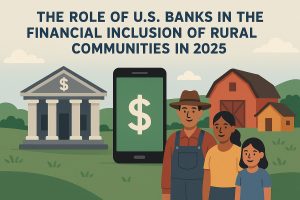In today’s fast-paced digital age, choosing the right bank account has become more crucial than ever. With numerous digital banks competing for your attention, each offering a variety of perks and services, finding the perfect fit for your financial needs can be daunting.
This guide aims to simplify the decision-making process by helping you understand your profile and identifying the features that matter most to you. By the end of this article, you’ll be equipped with the knowledge to make an informed choice that aligns with your financial goals.
Understanding your financial habits

The first step in selecting a digital bank account is understanding your financial habits. Your spending, saving, and investing behaviors will significantly influence the type of account that best suits you. Are you someone who prioritizes earning high-interest rates on savings, or do you value having access to a wide range of budgeting tools? Understanding your daily financial interactions is crucial.
Consider how frequently you make transactions and whether you rely heavily on cash. Digital banks often come with limited ATM access or specific ATM networks, so if cash withdrawals are a priority, you’ll want to ensure your chosen bank has the necessary infrastructure. Additionally, think about your savings habits. If you’re disciplined in saving, accounts with automated savings tools or higher interest rates may be ideal.
Lastly, assess your reliance on customer support. Some digital banks operate exclusively online, with no physical branches, which could be a challenge if you prefer face-to-face interactions. Alternatively, if you’re tech-savvy and comfortable managing your finances through an app or website, a fully digital experience may be more appealing. Your financial habits form the foundation for identifying the features you should prioritize.
Evaluating account fees and charges
Fees and charges are a critical aspect of any bank account decision. Digital banks are often celebrated for their low-fee or fee-free structures, but it’s important to delve into the fine print to ensure there are no surprises. By understanding the potential costs associated with each account, you can avoid unnecessary expenses and maximize the benefits of your digital banking experience.
Monthly maintenance fees are a common expense to consider. While many digital banks boast no monthly fees, some may require specific conditions, such as maintaining a minimum balance or setting up direct deposits, to waive these charges. Overdraft fees are another critical area to examine, especially if your spending occasionally exceeds your balance. Some banks offer overdraft protection or no overdraft fees, which can be a lifesaver in unexpected situations.
Foreign transaction fees are also worth noting if you frequently travel or make purchases in other currencies. Digital banks targeting global users often provide fee-free international transactions, making them ideal for travelers and remote workers. By comparing the fee structures of different accounts, you can align your choice with your financial needs and avoid eroding your hard-earned money through hidden charges.
Prioritizing innovative features and tools
One of the defining characteristics of digital banks is their emphasis on innovation. Many digital banks go beyond traditional banking by offering tools and features designed to enhance financial management. Whether you’re a tech enthusiast or simply looking for convenience, the features offered by a digital bank can make a significant difference in your day-to-day banking experience.
Budgeting tools are among the most popular features provided by digital banks. These tools often include expense categorization, spending trends, and personalized recommendations to help you stay on track with your financial goals. If managing your budget has been a challenge, opting for a bank with robust budgeting capabilities could transform the way you handle your finances.
Automation is another area where digital banks excel. From automatic bill payments to savings tools that set aside a percentage of your income, these features can simplify financial management and help you achieve your goals faster. Additionally, consider whether the bank offers early direct deposit, a feature that allows you to access your paycheck up to two days earlier than traditional banks.
Security features should not be overlooked when evaluating a digital bank. Two-factor authentication, biometric login options, and real-time fraud alerts are essential in ensuring the safety of your funds and personal information. Choosing a bank that prioritizes security will give you peace of mind while managing your finances online.
Considering rewards and benefits
Digital banks often entice customers with a range of rewards and benefits. While these perks can be attractive, it’s important to evaluate whether they align with your financial habits and needs. A digital bank account with the right rewards program can enhance your banking experience and provide added value. Cashback on purchases is a common reward offered by many digital banks. This benefit can be particularly appealing if you frequently use your debit card for everyday expenses.
Some banks even tailor cashback rewards to specific spending categories, such as groceries or dining, making it easier to save money in areas where you spend the most. Savings incentives are another popular benefit. Some digital banks offer interest rates significantly higher than traditional banks, making them an excellent choice for those focused on growing their savings.
Additionally, gamified savings features, such as earning bonuses for reaching specific goals, can make saving money more engaging and rewarding. For travelers, global benefits like fee-free currency conversions or complimentary travel insurance can be a game-changer. If international transactions are a part of your financial life, choosing a bank that offers these perks can save you money and make traveling more convenient.
Matching your profile to the right bank
Ultimately, the best digital bank account is one that aligns with your unique profile. By combining an understanding of your financial habits, fee tolerance, desired features, and preferred rewards, you can narrow down your options and make a confident decision. Digital banks are designed to cater to diverse needs, so finding the right fit is entirely achievable.
For young professionals just starting their financial journey, a bank with no fees, robust budgeting tools, and early direct deposit options might be ideal. These features can help you establish good financial habits while maximizing your income. On the other hand, families may prioritize accounts that offer joint account capabilities, savings incentives, and strong customer support to accommodate shared financial responsibilities.
Frequent travelers and digital nomads should seek banks with global benefits, such as low foreign transaction fees and fee-free ATM withdrawals worldwide. These features ensure that managing finances while traveling remains seamless and cost-effective. Meanwhile, tech-savvy users may gravitate toward banks with cutting-edge features, intuitive apps, and real-time notifications to stay on top of their finances effortlessly.






